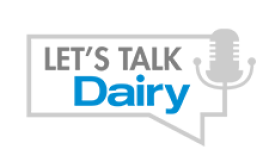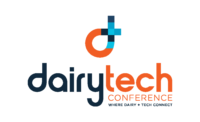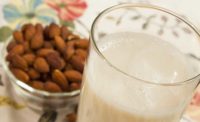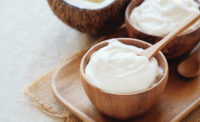According to an estimate from the U.S. Census Bureau, the U.S. population is now more than 332 million. And two of today’s youngest generations — millennials (born between 1981 and 1996) and Generation Z (born between 1997 and ~2012) — account for almost half of that total. U.S. millennials numbered 72.1 million as of 2020, while U.S. Gen Zers numbered almost 69 million, states Austin, Texas-based financial technology and marketing services firm Kasasa.
These generations present a huge opportunity to dairy processors. To capture these consumers, however, dairy product marketers must understand each generation’s wants, needs, and motivators.
Key generational attributes
As a whole, the U.S. millennial generation — the older of the two generations — has been struggling for some time.
“Millennials feel overwhelmed in life,” states “Marketing to Millennials, US,” a 2021 report from global market research firm Mintel. “Some feel they have fallen behind on major adult milestones. Others have reached these milestones but now struggle to manage ‘having it all’ in their careers, marriage, and parenthood.”
Millennials also earn very little in comparison to previous generations, notes Darrin C. Duber-Smith, senior lecturer at the Metropolitan State University of Denver. As such, they are very deal-conscious. And decision-making isn’t necessarily their forte.
“This is a group that didn’t leave the house until they were 30,” he points out, “and so decisions that we used to make as 20-somethings, their parents were still making those decisions for them.”



Yin Woon Rani, CEO of the Washington, D.C.-based Milk Processor Education Program (MilkPEP), joins us for episode three of the "Let's Talk Dairy" podcast. She discusses how to reach millennials and Gen Z in milk marketing efforts.
Millennials also engage in more variety-seeking behavior than previous generations, Duber-Smith adds. They are not brand loyal.
But that doesn’t mean brands can’t reach them with the right message.
“Ultimately, millennials feel knocked down by events outside of their control and are looking to brands to remind them of their strength and give them reasons to treat themselves,” Mintel states.
Gen Z consumers, meanwhile, view themselves as “creative and unique” in their life aspects, notes Mintel in its 2021 “Marketing to Generation Z, US” report.
“They feel this differentiates them from the generations who came before them,” the report states. “At his stage of their life, many of their choices are driven by this desire to stand out and express what makes them unique. Brands that can offer more personalization in their products can give Gen Zs something that it theirs alone.”
And unlike most millennials, Gen Zers are digital natives, too, Duber-Smith notes. They have little or no memory of a world before smartphones and are adept at juggling many sources of information.
But not all is rosy with this generation. According to a Jan. 14, 2022, article from McKinsey & Co., New York (tinyurl.com/69jbbhx8), many Gen Zers are suffering from COVID-19 pandemic-related mental health issues.
“They are reporting higher rates of anxiety, depression, and distress than any other age group,” the article states.
Meet them where they are
Despite their differences, both generations are young (the oldest millennials are only 41) and have much in common. It is important that marketers meet these generations “where they are across an increasingly complicated media ecosystem” representing numerous product choices, says Yin Woon Rani, CEO of the Washington, D.C.-based Milk Processor Education Program (MilkPEP).
“We have also seen these younger consumers place a growing emphasis on values when it comes to making product and category choices, which tells us that passion and cause are crucial,” she says. “These audiences are not passive — they are engaged; they are inquisitive, and they expect the brands they love to show up with purpose and action.”
During the past year, MilkPEP has shifted its focus to “driving reconsideration of milk” among Gen Z teens and tweens and millennial parents, Rani says.
“Following a range of programming tactics,” she notes, “from strategic partnerships with cultural sports icons like Juju Smith Schuster and Katie Ledecky to establishing brand integration in the metaverse with Roblox — a popular online gaming platform for teens and tweens — we found that there were two key takeaways for success when it comes to these audiences: 1) Cultural integration is critical, and 2) digital experiences can be impactful ads.”
In marketing specifically to millennials and Gen Z consumers, Danone North America understands these generations are turning to social media “more than ever” to connect with authentic voices regarding topics such as health and wellness, says Kallie Goodwin, vice president, family and wellness brands for the White Plains, N.Y.- and Broomfield, Colo.-based company.
“We are collaborating with a family of influencers that reflect our brand and consumer values, interests, and lifestyles,” she notes. “For us, the ‘who’ is as important as the ‘how.’ For example, on Activia, we are exploring deeper brand ambassador partnerships rather than traditional advertising by way of influencer channels. We are also sharing Activia content more authentically with consumers in multicultural communities who are increasingly prioritizing gut health and probiotics — for example, creating bespoke content and collaborating with media partners that are dedicated to the Hispanic community.”

Danone North America is “leaning into the golden age of video content,” too, and offering more of its media mix to its streaming partners, says Surbhi Martin, vice president, Greek yogurt and functional nutrition. For instance, the company’s Oikos brand recently came out with the “How Strong Do You Want to Be” campaign and opted for storytelling via digital and social channels.
“On football’s biggest night, we took to digital platforms — for example, NBC’s Peacock — to stream our ad content, which featured Deion ‘Coach Prime’ Sanders going toe to toe with his son Shedeur in a series of entertaining strength challenges with our high-protein offerings from Oikos Pro and Oikos Triple Zero,” she says. These digital platforms are not only where and how younger audiences are viewing content, but they also give us more opportunity to share the purpose behind our brands, which we know is increasingly important to millennials and Gen Z.”
This type of approach also is playing out for Danone North America’s Two Good Good Save Meyer Lemon yogurt, Martin says. Consumers who purchase the yogurt — which uses Verified Rescue Produce to help to reduce food waste — on Target.com can see one of the company’s marketing videos explain lemon rescue operations.
“Additionally, on our Two Good website, consumers can see in greater detail the impact they’ll have on food waste and food insecurity by purchasing Two Good products,” she says.
Dairy-specific challenges



In Episode 12 of the “Let’s Talk Dairy” podcast, Andy Judd, chief marketing officer of Boulder, Colo.-based Yasso, joins us to discuss the company’s latest marketing initiatives, including how the company reaches younger generations.
Dairy as a category can present additional marketing challenges when it comes to younger generations. According to “The Future of Plant-based Snapshot: The Evolution of Plant-based Continues,” a 2021 report from The NPD Group, millennials, and Gen Z are gravitating toward plant-based offerings. The company forecasts continued growth for both dairy and meat plant-based alternatives, driven almost entirely by these two generations, who choose those products for health, sustainability, and animal welfare reasons.
A common misconception here is that consumers are misinformed about milk’s and other dairy products’ benefits, Rani says.
“In actuality, the real challenge at hand is understanding the consumer thought process, putting them first, and adapting to their needs,” she explains. “For Gen Z and millennials specifically, these needs appear in modern areas — is the campaign authentic, engaging, purposeful?”
For milk to flourish among these generations, marketing also needs to be modern. That reality comes with its own challenges because what constitutes modern is changing constantly, Rani says.
“It requires parallel pathing with culture, trends, social media — and continually pivoting based on these inevitable changes,” she states. “To be modern, you need to be flexible, adaptable, and in real-time.”
A lift survey MilkPEP performed before, during, and after its decidedly modern Roblox campaign — which featured an “intriguing online extreme sports platform” built based on the interests of young target demographics and generated almost 40 million impressions, 10 million video views, and 2 million game plays — showed some positives gains for the milk segment, Rani says. In fact, 70% of tweens indicated post-campaign that they drink milk, an increase of 8% from the pre-campaign level. And 62% agreed post-campaign that dairy milk is “cool,” an increase of 6% compared to pre-campaign.
The need for modernity also applies to dairy product packaging, Rani adds. She points to studies showing increased sales for dairy products sporting new and modern packaging.
And sometimes it’s the dairy product itself that doesn’t quite resonate with younger generations. Greek yogurt is an example of such a product, at least in recent years.
“We conducted a major study with Kantar that explored consumers’ relationship with the yogurt category and found it ‘underperforms’ among millennials, who felt a lack of excitement around new and interesting taste experiences,” Martin says. “This shed light for us on why the Greek segment was losing household penetration with younger consumers — while many choose yogurt for functional benefits, it is not always delivering an exciting food experience.”
The findings inspired Danone North America to reimagine its Oikos Greek yogurt, she notes. The result? The new Oikos Blended line, which contains 50% more fruit and a thick and creamy texture.
The packaging got a modern look, too — a bright white cup with bold black lettering and delicious-looking fruit, Martin says.
“Our product names were not your expected yogurt nomenclature; they described the yogurt with a signature ‘loaded with real’ descriptor for our fruit variants and an ‘anything but plain’ name for our plain yogurt,” she notes. “These specifics on … pack design were tailored to excite and recruit a younger generation of Greek yogurt eaters.”




